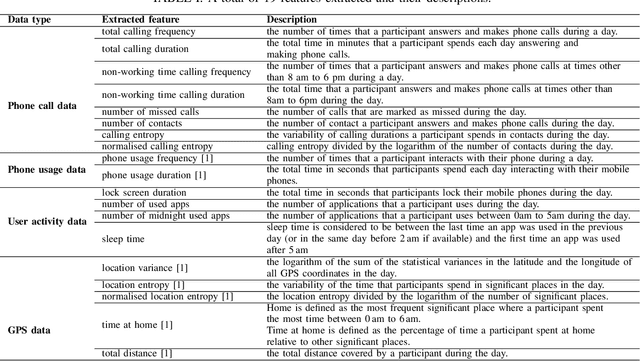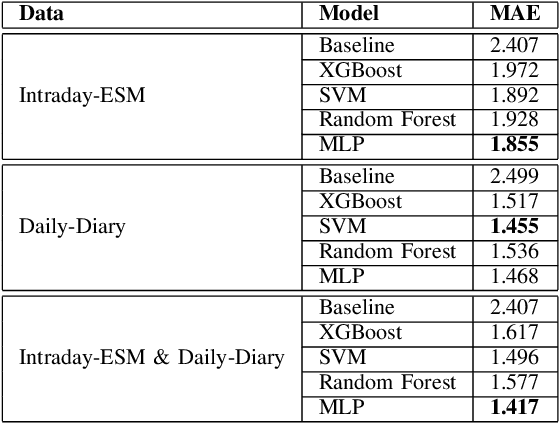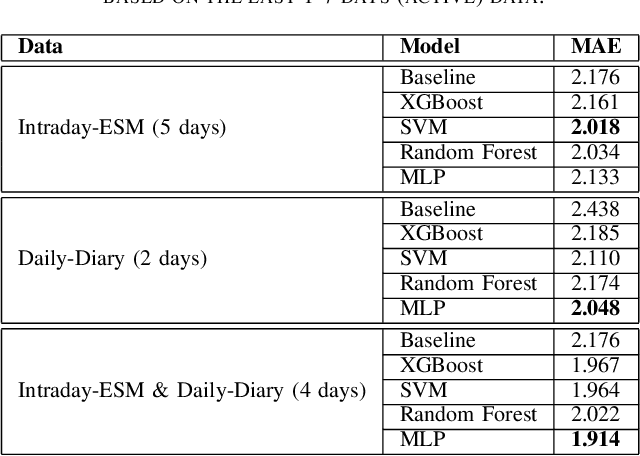Mathias Harrer
Predicting Individualized Effects of Internet-Based Treatment for Genito-Pelvic Pain/Penetration Disorder: Development and Internal Validation of a Multivariable Decision Tree Model
Mar 15, 2023Abstract:Genito-Pelvic Pain/Penetration-Disorder (GPPPD) is a common disorder but rarely treated in routine care. Previous research documents that GPPPD symptoms can be treated effectively using internet-based psychological interventions. However, non-response remains common for all state-of-the-art treatments and it is unclear which patient groups are expected to benefit most from an internet-based intervention. Multivariable prediction models are increasingly used to identify predictors of heterogeneous treatment effects, and to allocate treatments with the greatest expected benefits. In this study, we developed and internally validated a multivariable decision tree model that predicts effects of an internet-based treatment on a multidimensional composite score of GPPPD symptoms. Data of a randomized controlled trial comparing the internet-based intervention to a waitlist control group (N =200) was used to develop a decision tree model using model-based recursive partitioning. Model performance was assessed by examining the apparent and bootstrap bias-corrected performance. The final pruned decision tree consisted of one splitting variable, joint dyadic coping, based on which two response clusters emerged. No effect was found for patients with low dyadic coping ($n$=33; $d$=0.12; 95% CI: -0.57-0.80), while large effects ($d$=1.00; 95%CI: 0.68-1.32; $n$=167) are predicted for those with high dyadic coping at baseline. The bootstrap-bias-corrected performance of the model was $R^2$=27.74% (RMSE=13.22).
Depression Diagnosis and Forecast based on Mobile Phone Sensor Data
May 10, 2022


Abstract:Previous studies have shown the correlation between sensor data collected from mobile phones and human depression states. Compared to the traditional self-assessment questionnaires, the passive data collected from mobile phones is easier to access and less time-consuming. In particular, passive mobile phone data can be collected on a flexible time interval, thus detecting moment-by-moment psychological changes and helping achieve earlier interventions. Moreover, while previous studies mainly focused on depression diagnosis using mobile phone data, depression forecasting has not received sufficient attention. In this work, we extract four types of passive features from mobile phone data, including phone call, phone usage, user activity, and GPS features. We implement a long short-term memory (LSTM) network in a subject-independent 10-fold cross-validation setup to model both a diagnostic and a forecasting tasks. Experimental results show that the forecasting task achieves comparable results with the diagnostic task, which indicates the possibility of forecasting depression from mobile phone sensor data. Our model achieves an accuracy of 77.0 % for major depression forecasting (binary), an accuracy of 53.7 % for depression severity forecasting (5 classes), and a best RMSE score of 4.094 (PHQ-9, range from 0 to 27).
Journaling Data for Daily PHQ-2 Depression Prediction and Forecasting
May 06, 2022


Abstract:Digital health applications are becoming increasingly important for assessing and monitoring the wellbeing of people suffering from mental health conditions like depression. A common target of said applications is to predict the results of self-assessed Patient-Health-Questionnaires (PHQ), indicating current symptom severity of depressive individuals. In this work, we explore the potential of using actively-collected data to predict and forecast daily PHQ-2 scores on a newly-collected longitudinal dataset. We obtain a best MAE of 1.417 for daily prediction of PHQ-2 scores, which specifically in the used dataset have a range of 0 to 12, using leave-one-subject-out cross-validation, as well as a best MAE of 1.914 for forecasting PHQ-2 scores using data from up to the last 7 days. This illustrates the additive value that can be obtained by incorporating actively-collected data in a depression monitoring application.
 Add to Chrome
Add to Chrome Add to Firefox
Add to Firefox Add to Edge
Add to Edge